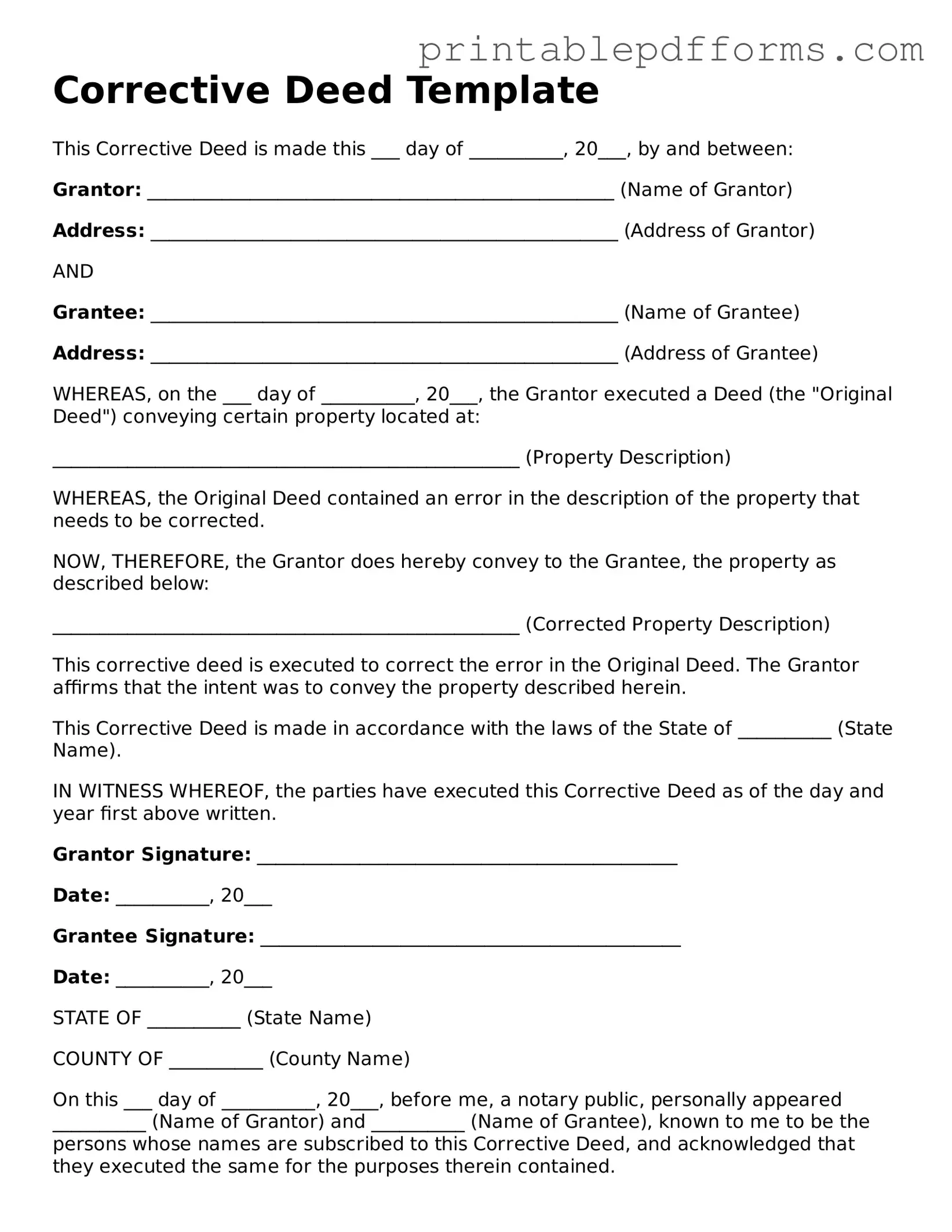Corrective Deed Template
This Corrective Deed is made this ___ day of __________, 20___, by and between:
Grantor: __________________________________________________ (Name of Grantor)
Address: __________________________________________________ (Address of Grantor)
AND
Grantee: __________________________________________________ (Name of Grantee)
Address: __________________________________________________ (Address of Grantee)
WHEREAS, on the ___ day of __________, 20___, the Grantor executed a Deed (the "Original Deed") conveying certain property located at:
__________________________________________________ (Property Description)
WHEREAS, the Original Deed contained an error in the description of the property that needs to be corrected.
NOW, THEREFORE, the Grantor does hereby convey to the Grantee, the property as described below:
__________________________________________________ (Corrected Property Description)
This corrective deed is executed to correct the error in the Original Deed. The Grantor affirms that the intent was to convey the property described herein.
This Corrective Deed is made in accordance with the laws of the State of __________ (State Name).
IN WITNESS WHEREOF, the parties have executed this Corrective Deed as of the day and year first above written.
Grantor Signature: _____________________________________________
Date: __________, 20___
Grantee Signature: _____________________________________________
Date: __________, 20___
STATE OF __________ (State Name)
COUNTY OF __________ (County Name)
On this ___ day of __________, 20___, before me, a notary public, personally appeared __________ (Name of Grantor) and __________ (Name of Grantee), known to me to be the persons whose names are subscribed to this Corrective Deed, and acknowledged that they executed the same for the purposes therein contained.
Notary Public Signature: _____________________________________
My Commission Expires: __________, 20___
